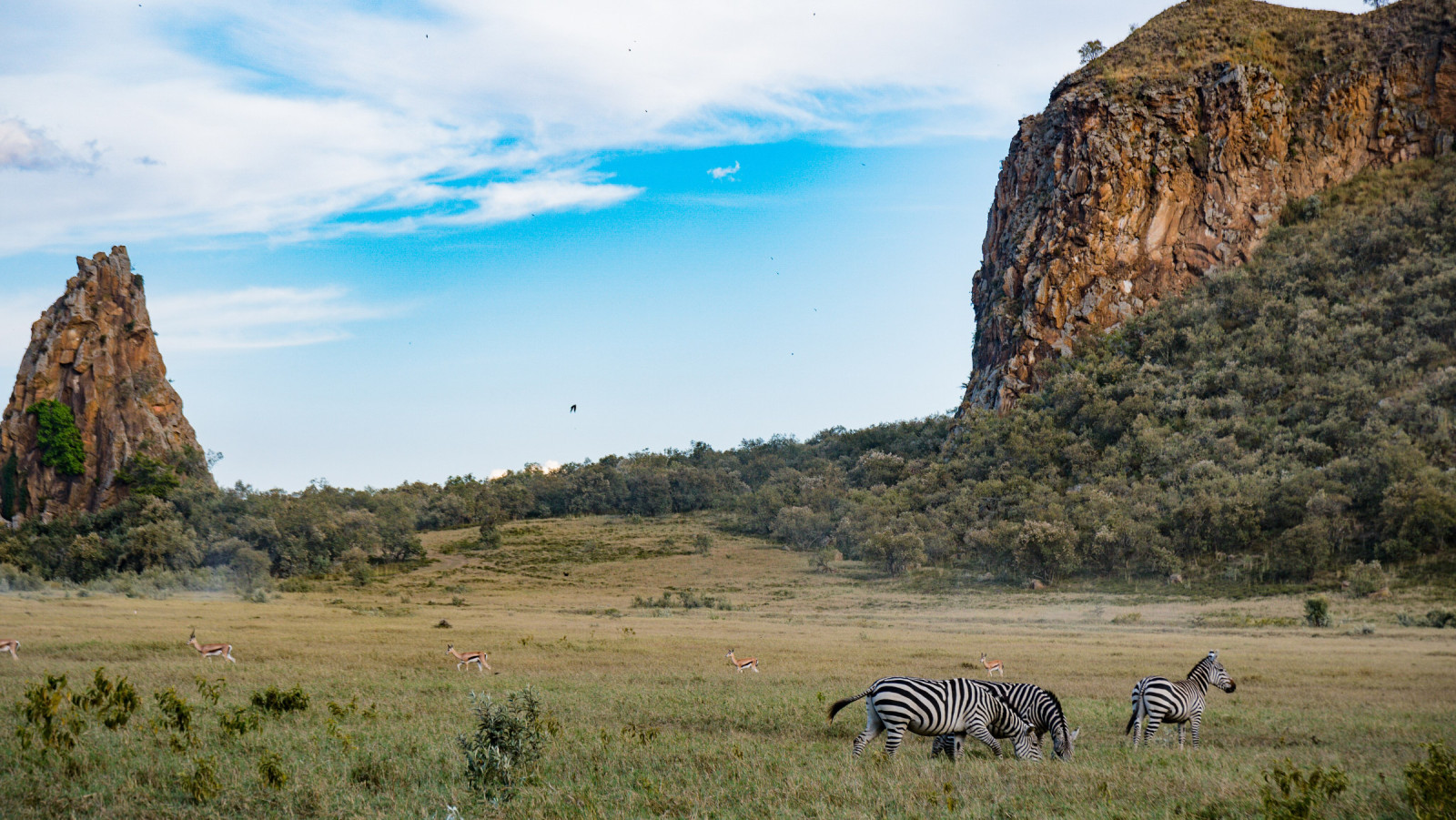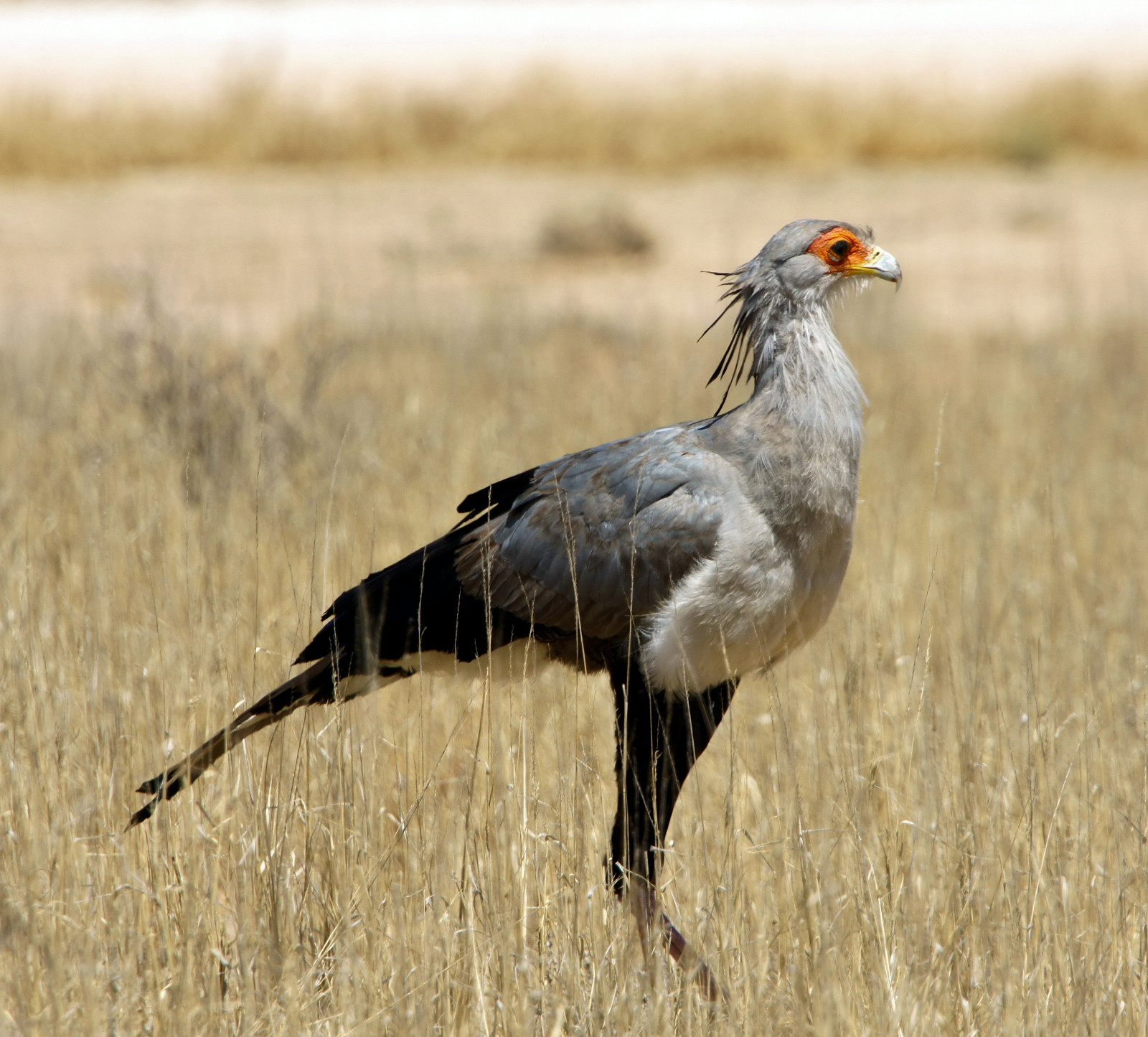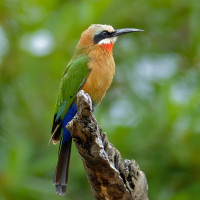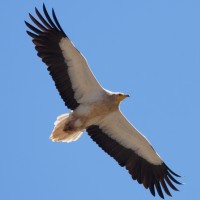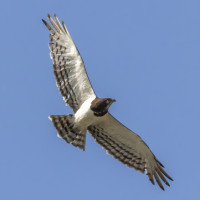Descripción
Hell’s Gate National Park is a beautiful nature reserve in Kenya’s Great Rift Valley. Hell's Gate covers an area of 68.25 square kilometres and is at 1,900 metres above sea level. The park is notable for its wide variety of wildlife and for its scenery. Within Hell's Gate is the Hells Gate Gorge, lined with red cliffs which contain two volcanic plugs: Fischer's Tower (1) and Central Tower (2). Off of Central Tower is a smaller gorge which extends to the south, with a path that descends into hot springs that have rocks hot enough to cause burns, and sulfuric water. You can hike or cycle within the park, one of only two Kenyan national parks where this is allowed. No major predators like lions or leopards roam the park. This makes Hell's Gate a wonderful site for birding on foot or by bike.
The park’s geological formations, open grasslands, rocky cliffs, and geothermal areas provide an array of habitats that support a diverse avifauna. Hell's Gate National Park is known for its raptors, including Martial Eagle, Tawny Eagle, Verreaux's Eagle, Black-chested Snake Eagle, Egyptian Vulture, Bearded Vulture, Rüppell's Griffon, and White-backed Vulture. Other birds you can observe include Abyssinian Wheatear, Secretarybird, Chinspot Batis, Superb Starling, White-fronted Bee-eater and African Pipit.
Detalles
Accesso
Hell’s Gate National Park is located near Lake Naivasha, about 90 km northwest of Nairobi. Take the A104 highway toward Naivasha, then turn onto Moi South Lake Road. Follow signs to Elsa Gate, the main entrance. Press P on the map for directions to Elsa Gate. The park also has an entrance gate in the north: Olkaria Gate (3).
Both gates are open daily from 6:00 AM to 6:00 PM. Entry Fee: Around $25 for adults. The park features three basic campsites. Best Time to Visit: Dry seasons - January to March and July to October.
